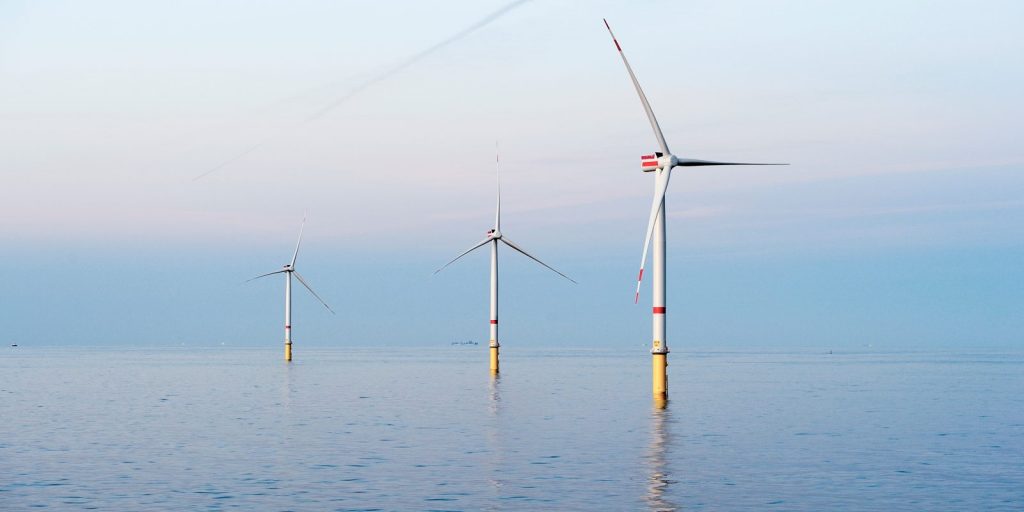Final turbine installed on France’s first offshore wind farm, with Macron pushing hard on renewables
Installation of all 80 offshore wind turbines off the west coast of France has been completed, with France’s first offshore wind farm scheduled to be up and running by the end of the year. The Saint Nazaire site will produce enough power to cover 20% of total electricity consumption of the Loire-Atlantic, or around 700,000 people.
more…
The post Final turbine installed on France’s first offshore wind farm, with Macron pushing hard on renewables appeared first on Electrek.

Installation of all 80 offshore wind turbines off the west coast of France has been completed, with France’s first offshore wind farm scheduled to be up and running by the end of the year. The Saint Nazaire site will produce enough power to cover 20% of total electricity consumption of the Loire-Atlantic, or around 700,000 people.
In a bid to promote renewable energy, French president Emmanuel Macron was set to visit the site this Monday, but it has been pushed back due to driving rain and rough seas this week. Back in February, Macron announced the government’s plan to have around 40 GW of offshore wind capacity up and running by 2050, or about 50 offshore wind farms off the country’s coasts. And now he is working to urgently push a new bill that will increase the amount of land where wind turbines can be constructed as well as provide some compensation for residents living near wind farm sites.
France heavily relies on nuclear energy, which accounts for around 75% of total production, while renewable and fossil fuels make up around 18%, and the bulk of renewable energy comes from hydroelectricity. While France has been slow to adopt offshore wind power, the country is making a strong push from its reliance on fossil fuels, and by 2030 wind is expected to outpace hydropower in the country. In addition, Russia’s war with Ukraine has put further tensions on the situation with steep price hikes on electricity and potential cut-offs from gas supplies should Russia decide to do so.
However, offshore wind turbines are hotly debated in France, with pushback from environmental groups and fishing industries, who make solid claims on the high stakes of the game, and of course the residents and tourism industries, who want a nice view. This project, which was originally approved by the government back in 2012, has been beset with local opposition and governmental delays, and like all renewable infrastructure of this scale, fraught with competing interests.
Back in April, the project’s first wind turbine was set in place, and is now ahead of schedule and set to be fully operational by the end of this year. Developed by the renewables arm of France’s EDF and Enbridge, the wind farm will have a capacity of 480 MW and uses Haliade 150-6 MW turbines. With nearby Nantes Saint-Nazaire as the project’s hub, Jan De Nul’s jack-up vessel Vole au vent installed the turbines in sets of four, where the 1,500-tonne main crane of the vessel mounted them on top of monopile foundations, which were placed anywhere from 12 km to 20 km off the coast. Installing one turbine took about 24 hours, with each installation trip taking around five days.
This summer, the French government also solidified two zones for offshore wind farms off the coast of the South Atlantic following a massive public debate involving 15,000 participants, with environmental protection being the top concern on the table, particularly the risk to migrating birds in the region, some of them already endangered. The first wind farm is targeted off the island of Oléron, more than 35 km off the coast of La Rochelle, with a capacity of around 1,000 MW. The second wind farm will likely be located farther out at sea, and be either floating or a fixed-bottom foundation, depending on the results of ongoing ecological studies on both locations. The two wind farms would together produce the equivalent to the electricity consumption of 1.6 million people.
Subscribe to Electrek on YouTube for exclusive videos and subscribe to the podcast.
